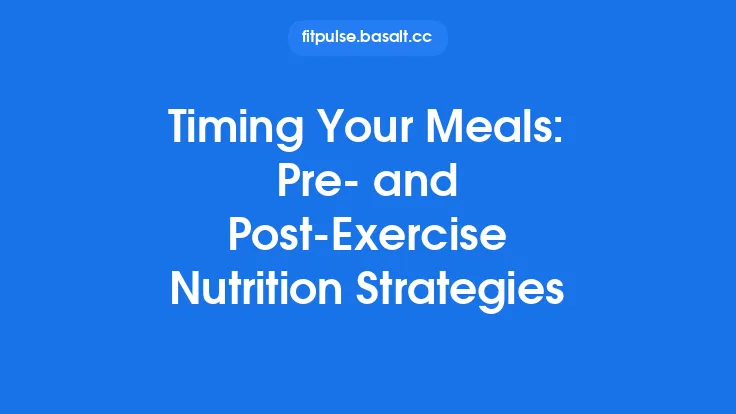When it comes to getting the most out of compression garments, timing is just as important as the fit and fabric. While many athletes instinctively reach for their compression sleeves, socks, or tights after a hard workout, the truth is that strategic use before, during, and after exercise can each deliver distinct physiological benefits. Understanding the underlying mechanisms—such as enhanced venous return, reduced muscle oscillation, and improved proprioception—helps you decide when to slip on the gear for optimal performance, injury prevention, and recovery.
Pre‑Exercise: Preparing Muscles and Circulation
1. Warm‑up Amplification
A well‑executed warm‑up raises core temperature, increases blood flow, and primes the nervous system. Adding compression to this routine can further accelerate circulatory dynamics. Graduated compression (tightest at the distal end, gradually loosening proximally) creates a pressure gradient that encourages venous blood to move back toward the heart, reducing venous pooling in the lower limbs. This effect:
- Boosts oxygen delivery to working muscles before they contract.
- Facilitates removal of metabolic by‑products that may have accumulated during rest.
- Shortens the time needed to reach optimal muscle temperature, especially in cooler environments.
2. Muscle‑Stabilization and Proprioception
Compression garments apply gentle, uniform pressure across the skin and underlying fascia. This pressure stimulates cutaneous mechanoreceptors, which feed additional sensory information to the central nervous system. The result is a modest improvement in proprioceptive acuity—your body’s sense of joint position and movement. For activities that demand precise foot placement (e.g., sprint starts, agility drills, or weightlifting), this heightened awareness can translate into:
- More controlled joint mechanics, reducing the likelihood of awkward movements that could cause strain.
- Improved neuromuscular activation patterns, helping you recruit the right muscle fibers from the outset.
3. Psychological Readiness
The “ritual” of putting on compression gear can serve as a mental cue that signals it’s time to focus. Athletes often report feeling “tighter” or more “locked‑in” when they wear compression before a session, which can enhance confidence and readiness. While this is a subjective benefit, the psychological boost can indirectly improve performance by reducing pre‑competition anxiety.
Practical Recommendations
| Activity | Suggested Compression | Duration |
|---|---|---|
| Dynamic warm‑up (5‑10 min) | Light‑to‑moderate compression sleeves or tights | Wear throughout warm‑up |
| Power‑focused lifts (e.g., squats, deadlifts) | High‑compression thigh and calf sleeves | Put on 10‑15 min before first set |
| Endurance runs (≤30 min) | Moderate compression socks | Wear 5 min before start |
| Team sports (soccer, basketball) | Full‑leg compression tights | Slip on 10 min pre‑practice |
During Exercise: Enhancing Performance and Reducing Fatigue
1. Limiting Muscle Oscillation
When you run, jump, or change direction, each impact causes muscle fibers to vibrate—a phenomenon known as muscle oscillation. Excessive oscillation can lead to micro‑trauma, increased perceived effort, and early onset of fatigue. Compression garments act as a “second skin,” dampening these vibrations:
- Reduced micro‑damage means fewer inflammatory signals during the activity.
- Lowered metabolic cost, allowing you to sustain a given intensity for longer.
2. Optimizing Venous Return and Lymphatic Flow
During prolonged activity, especially in the lower extremities, gravity encourages blood to pool in the veins and interstitial spaces. Graduated compression maintains a pressure gradient that:
- Facilitates venous return, preventing blood from stagnating.
- Supports lymphatic drainage, which helps clear extracellular fluid and metabolic waste.
The net effect is a more stable circulatory environment, which can delay the “burn” associated with lactic acid accumulation and improve endurance performance.
3. Thermoregulation
Modern compression fabrics often incorporate moisture‑wicking fibers and engineered knit patterns that promote airflow. By pulling sweat away from the skin and allowing evaporative cooling, these garments help maintain a more consistent core temperature. This is especially valuable in hot or humid conditions where overheating can impair performance.
4. Joint Support Without Restriction
While compression is not a substitute for braces, the gentle pressure around joints (e.g., knees, ankles) can provide a subtle sense of stability. This can be advantageous in sports that involve rapid deceleration or lateral movements, where the added proprioceptive feedback helps maintain alignment without limiting range of motion.
Practical Recommendations
| Exercise Type | Ideal Compression Level | Key Benefits |
|---|---|---|
| High‑intensity interval training (HIIT) | Moderate‑to‑high compression (15‑20 mmHg) | Vibration dampening, improved venous return |
| Long‑distance running (≥60 min) | Moderate compression (10‑15 mmHg) | Thermoregulation, reduced swelling |
| Weightlifting (explosive lifts) | High compression (20‑30 mmHg) | Muscle stabilization, proprioceptive boost |
| Team sport drills (soccer, rugby) | Moderate compression tights or sleeves | Joint support, fatigue delay |
Tip: For activities that involve both upper and lower body (e.g., rowing, CrossFit), consider a coordinated compression system—upper‑body sleeves paired with lower‑body tights—to maintain consistent pressure gradients throughout the kinetic chain.
Post‑Exercise: Accelerating Recovery and Reducing Delayed Onset Muscle Soreness (DOMS)
1. Enhancing Venous and Lymphatic Return
After a workout, the circulatory system is still dealing with excess metabolic waste (lactate, hydrogen ions, inflammatory cytokines). Compression continues to promote a pressure gradient that pushes blood and lymph back toward the heart, expediting the removal of these substances. Faster clearance translates to:
- Reduced swelling in the muscles and surrounding tissues.
- Lowered perception of soreness within the first 24‑48 hours.
2. Mitigating Muscle Oscillation During Rest
Even while you’re resting, residual muscle vibrations can persist, especially after eccentric-heavy sessions (e.g., downhill running, plyometrics). Compression garments keep the muscle fibers gently restrained, limiting post‑exercise oscillation and thereby decreasing the risk of micro‑tears that would otherwise prolong recovery.
3. Supporting Tissue Re‑oxygenation
The improved blood flow facilitated by compression also delivers fresh oxygen and nutrients essential for tissue repair. This is particularly important for:
- Repairing damaged sarcomeres (the contractile units of muscle fibers).
- Replenishing glycogen stores in the muscles and liver.
4. Managing Inflammation Without Suppressing Adaptation
While anti‑inflammatory medications blunt the natural inflammatory response (potentially hindering adaptation), compression offers a mechanical means to modulate inflammation. By limiting excessive fluid accumulation and providing gentle pressure, it reduces the magnitude of swelling without completely shutting down the signaling pathways needed for muscle remodeling.
Practical Recommendations
| Recovery Goal | Compression Strategy | Duration |
|---|---|---|
| Immediate post‑session (0‑2 h) | High‑compression tights or sleeves (20‑30 mmHg) | 30‑90 min |
| Early recovery (2‑6 h) | Moderate compression (10‑15 mmHg) | Up to 2 h, optional |
| Overnight (8‑12 h) | Light compression (5‑10 mmHg) or none, based on comfort | Optional |
| Travel or prolonged inactivity | Graduated compression socks (15‑20 mmHg) | During travel or long periods of sitting |
Note: For athletes with a history of deep‑vein thrombosis (DVT) or circulatory disorders, consult a medical professional before using high‑compression garments for extended periods.
Integrating the Three Phases: A Sample Protocol
Below is a practical, day‑to‑day example that illustrates how to transition seamlessly from pre‑exercise to post‑exercise compression:
- Morning Warm‑up (7:30 am)
- Slip on moderate‑compression calf sleeves (10‑15 mmHg) 10 minutes before dynamic stretching.
- Training Session (8:00 am – 9:30 am)
- Upgrade to high‑compression full‑leg tights (20‑30 mmHg) for the main workout, especially if it includes heavy lifts or high‑impact intervals.
- Cool‑Down (9:30 am)
- Keep the tights on during a 10‑minute low‑intensity cool‑down (light jog or bike) to maintain venous return.
- Post‑Workout Recovery (9:45 am – 10:30 am)
- Switch to high‑compression recovery tights (20‑30 mmHg) for a 30‑minute “recovery window,” then either remove or downgrade to light compression for the remainder of the day.
- Evening (Optional)
- If you have a second, low‑intensity session (e.g., mobility work), wear light compression sleeves to keep circulation active without restricting movement.
Frequently Overlooked Considerations
1. Compression Gradient Direction
The effectiveness of graduated compression hinges on the direction of the pressure gradient. For lower‑body garments, the pressure should be highest at the ankle and gradually decrease up the calf, thigh, and hip. Reversing this gradient (e.g., wearing a garment that is tighter at the thigh than the ankle) can impede venous return and actually increase swelling.
2. Compatibility with Other Recovery Modalities
Compression can be combined safely with many other recovery tools:
- Cold water immersion: Wear compression after exiting the water to sustain the vasoconstriction‑vasodilation cycle.
- Active recovery: Light cycling or walking while wearing compression can further enhance circulation.
- Massage: Post‑massage compression helps lock in the benefits by preventing fluid re‑accumulation.
Avoid using compression simultaneously with pneumatic compression devices (e.g., air‑compression boots) unless specifically instructed, as overlapping pressures may cause discomfort or vascular strain.
3. Individual Variability
Factors such as limb circumference, vascular health, and personal tolerance influence the optimal compression level. While the guidelines above provide a solid baseline, athletes should experiment within safe pressure ranges and monitor how their bodies respond. Signs of excessive compression include numbness, tingling, or a “tight” feeling that impairs movement.
4. Seasonal Adjustments
In colder climates, high compression can feel restrictive and may reduce skin temperature, potentially increasing injury risk. Pair compression with a thin thermal layer or opt for slightly lower pressure during winter training. Conversely, in hot environments, prioritize garments with advanced moisture‑wicking and ventilation to prevent overheating.
Bottom Line
Compression garments are not a one‑size‑fits‑all solution, but when used strategically across the pre‑exercise, intra‑exercise, and post‑exercise windows, they can:
- Prime the circulatory system before activity, enhancing warm‑up efficiency.
- Stabilize muscles and joints during performance, reducing micro‑trauma and fatigue.
- Accelerate waste removal and tissue repair after training, mitigating soreness and swelling.
By aligning the type of compression, pressure level, and wear duration with the specific demands of each phase, athletes of all levels can extract measurable benefits without relying on gimmicks or over‑reliance on any single recovery tool. The key is consistency, proper gradient, and listening to your body’s feedback—principles that keep compression an evergreen ally in any training regimen.





